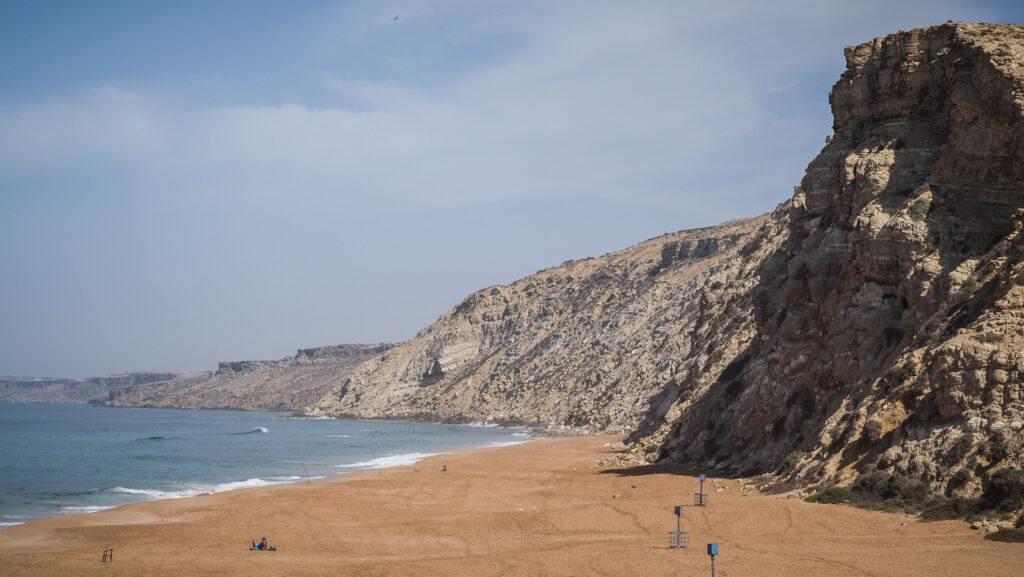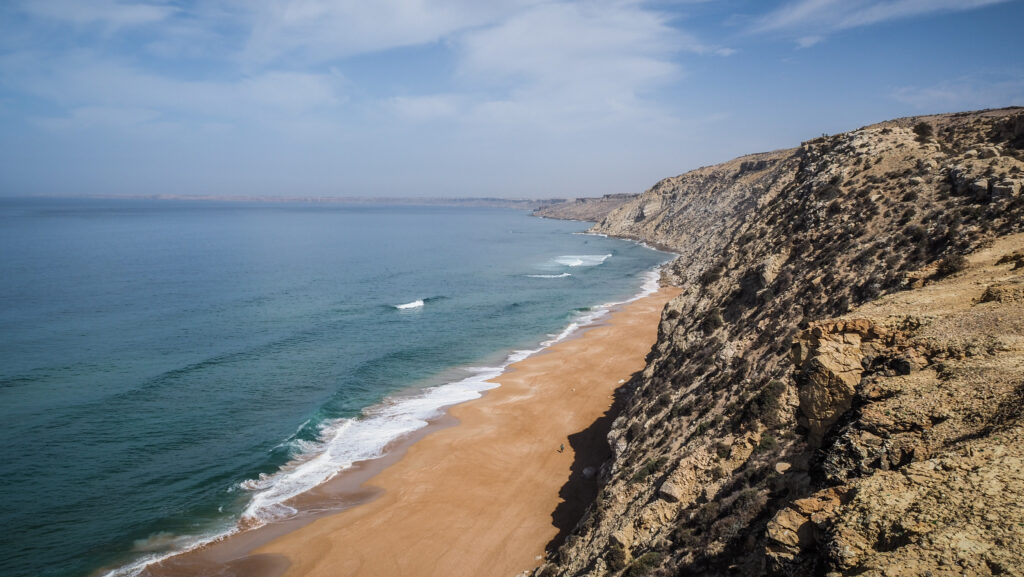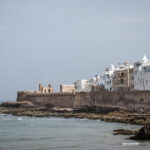Safi’s history dates back to ancient times, with evidence suggesting it was originally a Phoenician trading post. The Romans also left their mark on the city, known to them as Asfi, which served as a small settlement within the Roman Empire.
With the advent of Islam in the 7th century, Safi became part of the Islamic world. The city flourished under the Idrisid dynasty, establishing it as a significant port. During the 12th century, under the Almohads, Safi became a strategic coastal city and a centre for trade and military operations.
In 1508, the Portuguese captured Safi and fortified it as a stronghold. The Portuguese occupation lasted until 1541 when the Saadian dynasty expelled them. Under the Saadians, Safi became a key trading port, particularly for sugar and other goods. The city also served as a point of contact between Morocco and Europe.
During the Alaouite dynasty, Safi continued to thrive as a port city. The 17th and 18th centuries saw further development and the city expanded its role in regional trade.
Safi grew in prominence as a centre for the ceramic industry, with its pottery becoming renowned throughout Morocco and beyond. The city’s port also became a crucial hub for the export of phosphates, textiles, and other goods.
During the French Protectorate (1912-1956), Safi saw infrastructural development and modernization. The port was expanded, and new industries were established.
After Morocco gained independence in 1956, Safi continued to develop economically and culturally. Today, Safi is known for its rich cultural heritage, particularly its ceramics industry, historic architecture, and vibrant local traditions.
How to get there?
From Casablanca:
By Car:
Take the A3 highway from Casablanca to El Jadida, then continue on the N1 road to Safi. The journey is approximately 250 km and takes around 3-4 hours.
By Bus:
CTM and Supratours offer bus services from Casablanca to Safi. The bus ride takes approximately 4-5 hours.
By Train:
There is no direct train to Safi, but you can take a train from Casablanca to El Jadida, and then a bus or taxi to Safi.
From Marrakech:
By Car:
Take the N8 road to Chichaoua, then the R207 road to Safi. The journey is around 150 km and takes about 2-3 hours.
By Bus:
CTM and Supratours operate buses from Marrakech to Safi. The bus ride typically takes 3-4 hours.

From Rabat:
By Car:
Take the A1 highway to Casablanca, then follow the same route from Casablanca to Safi. The total distance is approximately 330 km and takes about 4-5 hours.
By Bus:
Take a bus from Rabat to Casablanca and then transfer to a bus heading to Safi.
By Train:
Similar to the route from Casablanca, take a train to El Jadida, then a bus or taxi to Safi.
From Agadir:
By Car:
Take the N1 road north to Safi. The journey is around 230 km and takes about 3-4 hours.
By Bus:
CTM and Supratours provide bus services from Agadir to Safi. The bus ride usually takes around 5-6 hours.
You may check your connections at 12go.com.
The best time to visit
The best time to visit Safi is during the spring (March to May) and fall (September to November) when the weather is mild and pleasant. Summer can be quite hot, while winter brings cooler but still enjoyable temperatures. Choosing spring or fall ensures a comfortable climate for enjoying the beach and exploring the city and its surroundings.
How long to stay there?
You can comfortably spend half a day in Lalla Fatna Beach and another half walking around Safi.
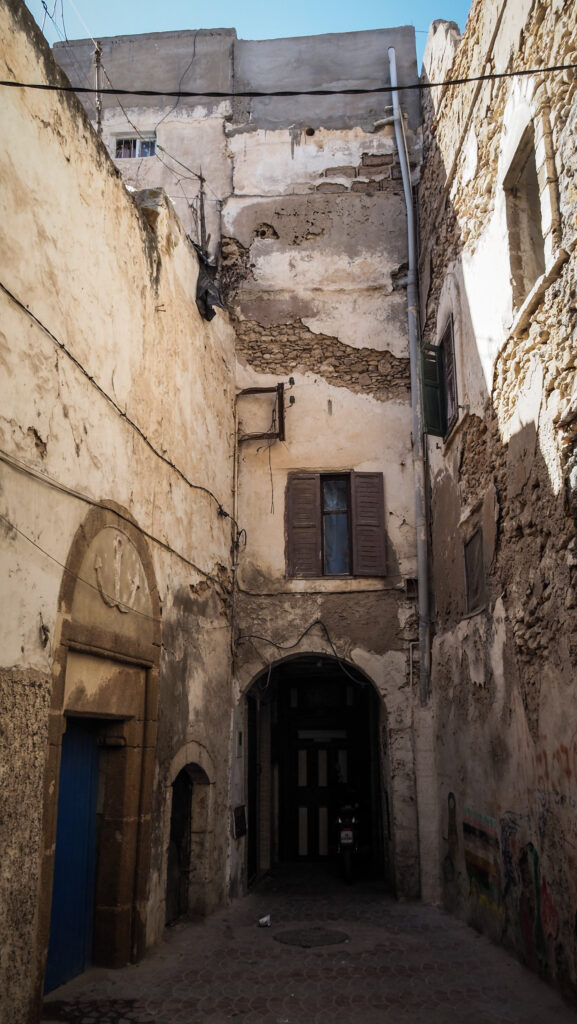
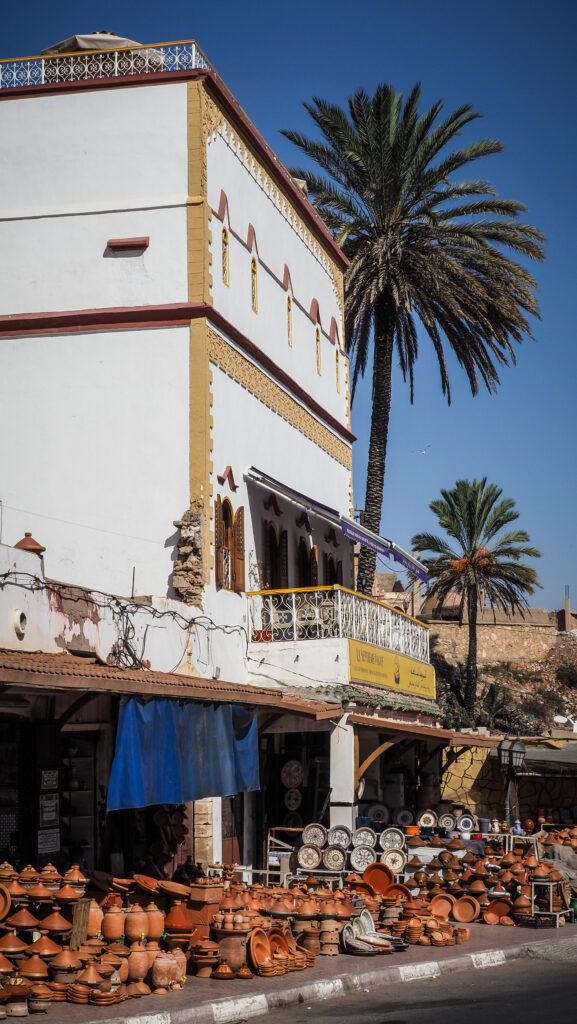
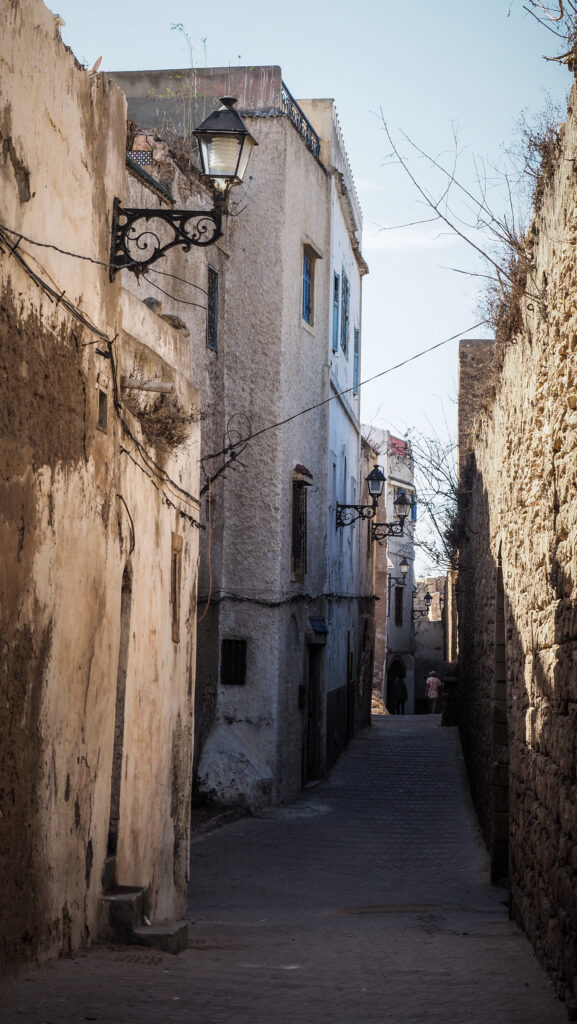
What to see in Safi?
I reached Safi with shaking legs as the driver of a shared taxi was going over 150 km/h on a single-lane, narrow road along the coast. Insane…
I walked along Corniche de Safi which is a nice little promenade, quite empty during the day but certainly it becomes more alive after sunset. Cleanliness could be improved though. In its northern corner lies Ksar El Bahr, an old fortress which was built at the beginning of the 16th century by the Portuguese. It is now off-limits to tourists due to the damage caused by ocean waves and the lack of maintenance.

The medina can be accessed by various historical and beautiful city gates: Bab El Maasra, Bab Jdid, Bab Agrour, Bab El Kasbah, Bab Chaaba, and Bab Lakouas. Inside the medina, the best thing that you can do is simply lose yourself in narrow streets, trying to find your way out. I’m sure you will discover many interesting corners and photogenic places.

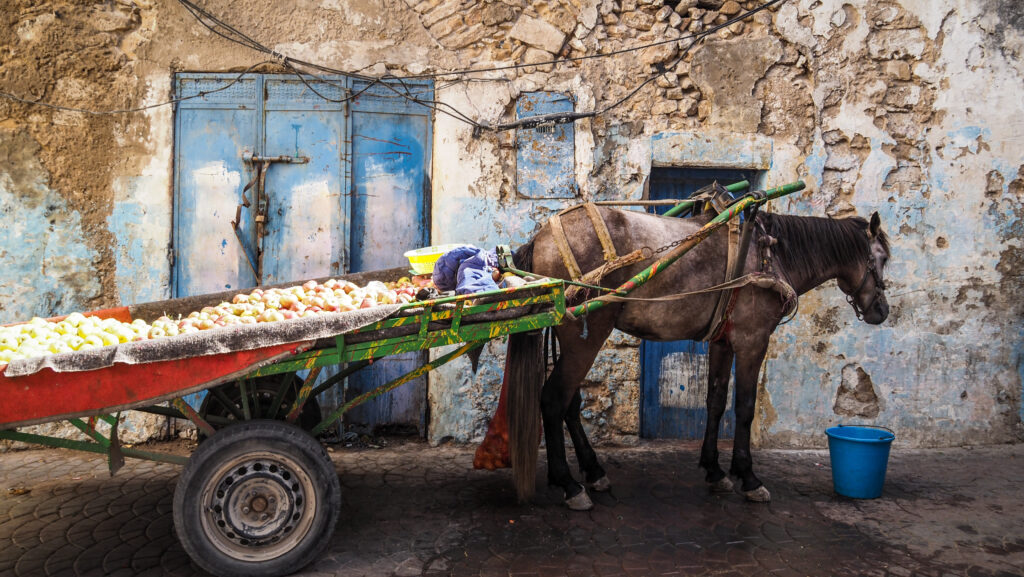
You should do your best to locate the Grand Mosque of Safi and the Portuguese Cathedral. The latter is a ruined temple, that was built in 1519 by the Portuguese. The construction was never completed, and most of the structure was demolished after the departure of the Portuguese King Manuel in 1541. All that remains are parts of the choir and a side chapel. As of November 2023, it was not possible to get inside.
The eastern side of the medina is dominated by Dar al-Sultan, also known as the High Kasbah. It is a castle that dates back to the Almohad period and is more than 700 years old. It contains a wall and four towers to monitor any possible external invasion. There is nothing to see inside the building.
Outside of the medina walls is a well-presented and informative National Museum of Ceramics, presenting the history of pottery from different parts of Morocco.
From the National Museum of Ceramics, turn left into Avenue Moulay Idriss 1er to reach the roundabout with the large monument of the tagine, a North African dish, named after the earthenware pot in which it is cooked. It symbolizes the pottery crafts of Safi.

Lalla Fatna Beach
Lalla Fatna Beach is situated approximately 10 km north of Safi, making it easily accessible for visitors staying in or around the city. The beach is known for its rugged coastline, featuring striking rock formations and cliffs that provide a dramatic backdrop to the sandy shores. The beach is popular among surfers due to its consistent waves and good surfing conditions. There are just basic facilities with one small bar.
You can get a shared taxi to get there from Safi but you will be dropped off at the crossroad and from there, it is about 30 minutes walk down to the beach. On the way back, you will need to hike up to the main road and try your luck with hitchhiking or flagging down a shared taxi. There is no public transport there.
